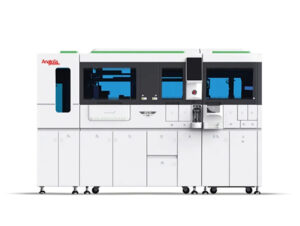
As temperatures drop and gatherings move indoors, respiratory illnesses begin to resurface across Europe.
According to the latest surveillance by the European Centre for Disease Prevention and Control (ECDC), circulation of SARS-CoV-2 remains widespread, while Influenza and RSV activity, though still low for now, are expected to rise sharply in the coming weeks.
This early-season calm often precedes a steep increase in viral respiratory infections that can strain healthcare systems each winter.
Beyond Influenza and COVID-19, a wide spectrum of pathogens contributes to seasonal respiratory diseases, ranging from mild colds to severe Pneumonia. Understanding which viruses and bacteria dominate at the start of the season helps laboratories and clinicians prepare for the months ahead.
Which Pathogens Are Driving Early Cases?
Respiratory tract infections may originate from a variety of viral and bacterial agents. The most common viral culprits include Influenza A and B, Respiratory Syncytial Virus (RSV A/B), Human Metapneumovirus, Adenovirus, Rhinovirus, and the four Seasonal Coronaviruses (229E, NL63, OC43, HKU1), alongside SARS-CoV-2 itself.
In children, Parainfluenza Viruses, Enteroviruses, and Bocavirus are frequent causes of upper-respiratory infections and Bronchiolitis.
Several atypical and bacterial pathogens also show increased incidence during colder months.
M. pneumoniae and C. pneumoniae are key causes of “Walking Pneumonia” in adolescents and adults, while H. influenzae, S. pneumoniae, S. aureus, and K. pneumoniae remain major contributors to Bacterial Pneumonia.

Opportunistic infections, such as Legionella pneumophila, may also appear sporadically, particularly in poorly maintained water systems when heating networks are reactivated for winter.
Why Do Respiratory Infections Peak in Winter?
Several factors converge during the colder months:
These combined effects create ideal conditions for simultaneous circulation of multiple respiratory pathogens—a challenge for both clinical diagnosis and public-health monitoring.
The Challenge of Similar Symptoms
Cough, fever, and sore throat can stem from many pathogens that are clinically indistinguishable. An influenza-like illness could equally be caused by SARS-CoV-2, RSV, Metapneumovirus, or Adenovirus.
Coinfections such as Influenza plus RSV or SARS-CoV-2 plus Mycoplasma pneumoniae are increasingly reported and can complicate treatment decisions.

Accurate identification of the causative agent supports timely antiviral or antibiotic use, limits unnecessary prescriptions, and enables public-health agencies to track emerging outbreaks. Molecular methods, such as Real-Time PCR, have become the cornerstone of respiratory diagnostics by allowing simultaneous detection of multiple pathogens from a single patient sample.
Diagnostics as a Cornerstone of Preparedness
Modern multiplex Real-Time PCR assays allow detection of over 20 different respiratory pathogens, including Influenza viruses, RSV, Parainfluenza, Coronaviruses, M. pneumoniae, and L. pneumophila, in a single test run.

Their ability to distinguish viral from bacterial pathogens help clinicians choose appropriate therapies, supports infection-control measures, and improve surveillance accuracy.
For laboratories, proactive validation and stock management ahead of peak season ensure faster turnaround times when test volumes rise. Early preparedness, rather than reactive response, remains key to maintaining diagnostic capacity throughout the winter months.




